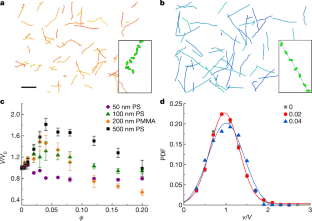2022-04-05 マサチューセッツ大学アマースト校

・音響テレメトリーと機械学習の革新的な活用により、Ecological Applications誌に最近掲載されました。複雑な生態学的関係を明確に示すものであり、継続的な保護活動に役立つツールになることが期待されています。
<関連情報>
- https://www.umass.edu/news/article/how-track-shark
- https://esajournals.onlinelibrary.wiley.com/doi/abs/10.1002/eap.2584
フロリダキーズにおける大型サメとゲームフィッシュの捕食者-被食者間のランドスケープPredator–prey landscapes of large sharks and game fishes in the
Lucas P. Griffin,Grace A. Casselberry,Susan K. Lowerre-Barbieri,Alejandro Acosta,Aaron J. Adams,Steven J. Cooke,Alex Filous,Claudia Friess,Tristan L. Guttridge,Neil Hammerschlag,Vital Heim,Danielle Morley,Mitchell J. Rider,Gregory B. Skomal,Matthew J. Smukall,Andy J. Danylchuk,Jacob W. Brownscombe
ESA Headquarters First published: 25 March 2022
<https://doi.org/10.1002/eap.2584>
Abstract
Interspecific interactions can play an essential role in shaping wildlife populations and communities. To date, assessments of interspecific interactions, and more specifically predator–prey dynamics, in aquatic systems over broad spatial and temporal scales (i.e., hundreds of km and multiple years) are rare due to constraints on our abilities to measure effectively at those scales. We applied new methods to identify space use overlap and potential predation risk to Atlantic tarpon (Megalops atlanticus) and permit (Trachinotus falcatus) from two known predators, great hammerhead (Sphyrna mokarran) and bull (Carcharhinus leucas) sharks over a three year period using acoustic telemetry in the coastal region of the Florida Keys (USA). By examining spatial-temporal overlap, as well as the timing and order of arrival at specific locations compared to random chance, we show that potential predation risk from great hammerhead and bull sharks to Atlantic tarpon and permit are heterogeneous across the Florida Keys. Additionally, we found that predator encounter rates with these game fishes are elevated at specific locations and times, including a pre-spawning aggregation site in the case of Atlantic tarpon. Further, using machine learning algorithms, we identify environmental variability in overlap between predators and their potential prey, including location, habitat, time of year, lunar cycle, depth, and water temperature. These predator–prey landscapes provide insights into fundamental ecosystem function and biological conservation, especially in the context of emerging fisheries-related depredation issues in coastal marine ecosystems.


